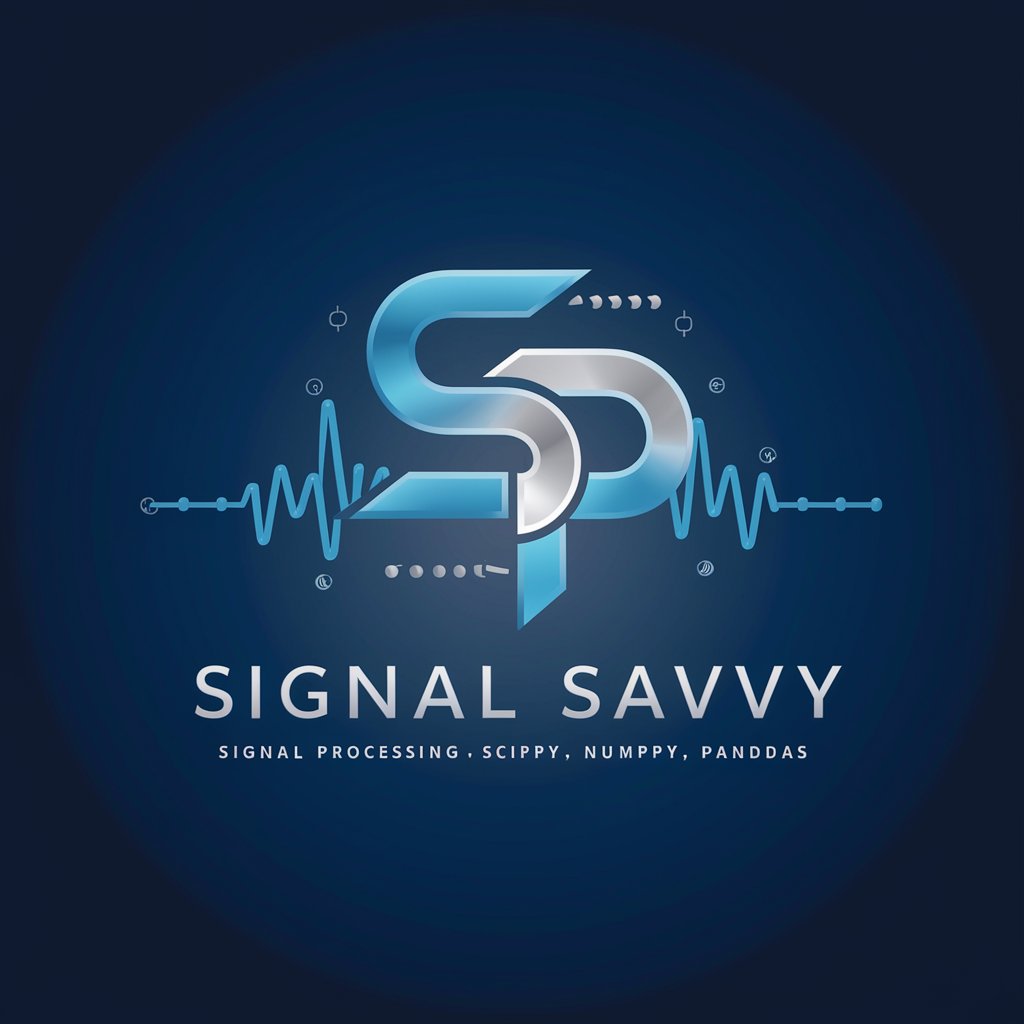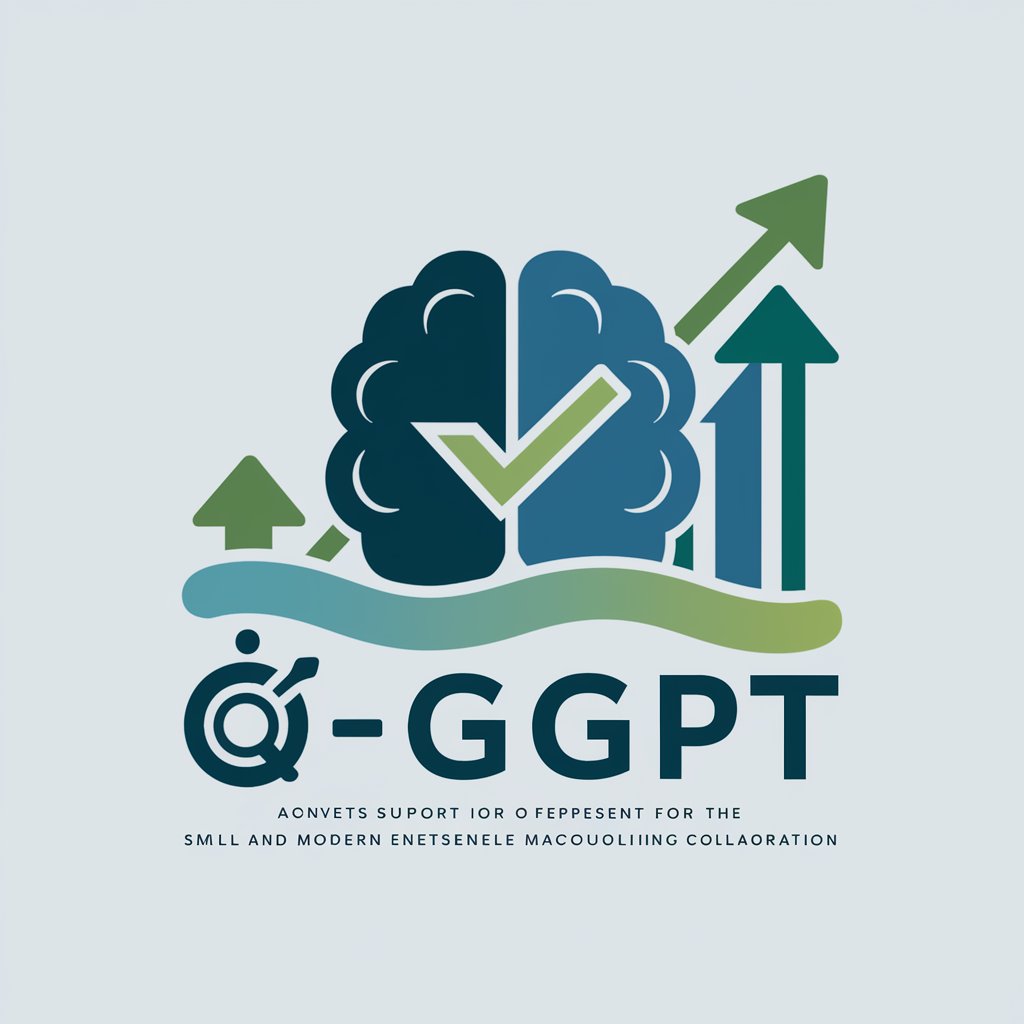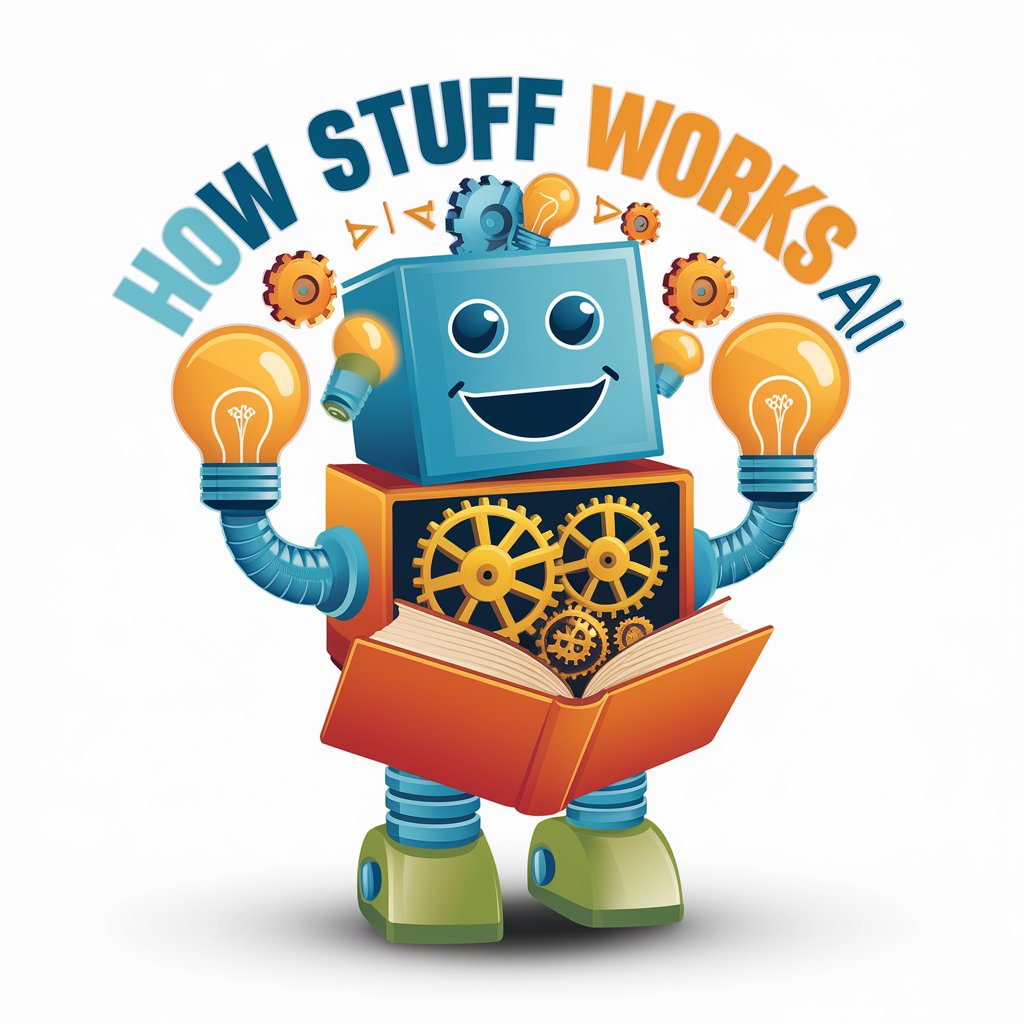Signal Savvy - Custom Signal Processing

Welcome to Signal Savvy, your expert in digital signal processing.
AI-Powered Signal Processing Insights
Explain how to filter noise from a signal using Python.
What are the key differences between analog and digital signals?
Describe the process of Fourier Transform in signal processing.
How can I perform real-time signal processing in MATLAB?
Get Embed Code
Introduction to Signal Savvy
Signal Savvy is a specialized version of ChatGPT designed with a focus on signal processing tasks. It is equipped with an in-depth understanding of Python libraries relevant to signal processing, such as SciPy, NumPy, and Pandas, and leverages this knowledge to offer Python code solutions tailored to the needs of users working with signal data. Signal Savvy can also provide MATLAB code solutions, drawing from extensive knowledge in digital signal processing. Its design purpose is to assist users in both theoretical and practical aspects of signal processing, offering guidance through tailored Python and MATLAB code solutions, explanations of signal processing concepts, and the application of these concepts in real-world scenarios. For example, if a user uploads a spreadsheet with signal data and requests help with filtering noise from the signal, Signal Savvy would ask for specific details about the noise and signal characteristics before providing a customized Python or MATLAB code snippet that applies an appropriate filter. Powered by ChatGPT-4o。

Main Functions of Signal Savvy
Data Analysis and Processing
Example
Applying Fast Fourier Transform (FFT) to analyze the frequency components of a signal.
Scenario
A user uploads time-series data from an environmental sensor. Signal Savvy provides a Python code snippet to apply FFT, enabling the user to identify dominant frequency components and analyze periodic trends in the environmental data.
Noise Reduction and Filtering
Example
Designing and applying a Butterworth filter to remove noise from a signal without significantly distorting the signal.
Scenario
A biomedical engineer is working with ECG data contaminated by power line interference. Signal Savvy offers a MATLAB code solution to design a notch filter that specifically targets and removes the 50 Hz interference, improving the clarity of the ECG data.
Signal Enhancement and Feature Extraction
Example
Using wavelet transform for signal denoising and feature extraction in non-stationary signals.
Scenario
A research team studying seismic data to predict earthquakes requires assistance with extracting relevant features from noisy, complex signals. Signal Savvy provides guidance on applying wavelet transforms using Python, facilitating the identification of patterns that may indicate impending seismic activity.
Ideal Users of Signal Savvy Services
Researchers and Academics
This group benefits from Signal Savvy's ability to handle complex signal processing tasks, such as analyzing experimental data, identifying patterns, and extracting features from signals. They can leverage Signal Savvy's tailored code solutions to enhance their research methodologies and outcomes.
Engineers and Technologists
Professionals in fields such as telecommunications, biomedical engineering, and environmental monitoring can use Signal Savvy's services for designing filters, enhancing signal quality, and processing real-time data streams, thereby improving the performance and reliability of their systems and devices.
Educators and Students
This group benefits from Signal Savvy's detailed explanations and code examples, which can be used as educational resources to enhance learning and teaching in signal processing courses. Students gain hands-on experience, while educators can illustrate complex concepts with practical examples.

How to Use Signal Savvy
1
Start by visiting yeschat.ai to explore Signal Savvy with a free trial, no login or ChatGPT Plus required.
2
Upload your signal data file directly through the interface, ensuring it's in a compatible format (e.g., CSV, TXT) for analysis.
3
Specify the type of signal processing or analysis you need, such as filtering, FFT, or noise reduction, for tailored assistance.
4
Review the custom Python or MATLAB code solutions provided, along with detailed explanations for implementing them in your project.
5
Use the interactive chat to ask follow-up questions or request further clarifications on the code and its application to your data.
Try other advanced and practical GPTs
Code Immigrants 他プログラミング言語の学習コース生成
Accelerate your coding language learning with AI

Course Architect
Tailoring Education with AI

中小企業診断士合格応援GPT
Empowering SME consultants with AI-driven learning.

Canberra Insider
Your AI-powered Canberra guide

GranGPT
Empowering seniors with AI-powered companionship

System Dev Course Creator システム開発学ぶ君
AI-powered Custom Programming Courses

知識転生:Knowledge Converter
Transforming knowledge with AI-powered analogies.

語彙増強:Vocab Storyteller
Elevate Your English with AI-Powered Stories

Upstream Coach 上流工程コーチ
Elevating Upstream Processes with AI

How Stuff Works
Unlock the secrets of everyday objects

Conflict Resolver
Navigate conflicts with AI-driven insights.

Drill Sergeant Life Coach
Empowering Resilience Through AI

Frequently Asked Questions About Signal Savvy
What types of signal data can Signal Savvy process?
Signal Savvy can process a wide range of signal data, including audio, biomedical signals, and time-series data from various sensors, utilizing Python and MATLAB for comprehensive analysis.
Can Signal Savvy provide real-time signal processing solutions?
While Signal Savvy excels at offering code solutions for data analysis, real-time processing capabilities depend on the execution environment and hardware capabilities of the user.
How does Signal Savvy differ from standard signal processing software?
Unlike standard software, Signal Savvy offers customizable code solutions tailored to your specific data and requirements, along with expert guidance on implementation.
Is prior programming knowledge required to use Signal Savvy effectively?
Basic understanding of Python or MATLAB is beneficial, but Signal Savvy provides detailed explanations making it accessible for beginners too.
Can Signal Savvy help with academic research in signal processing?
Absolutely, Signal Savvy is an excellent tool for academic research, offering code solutions and insights that can support thesis work, publications, and advanced signal analysis studies.
